
18 minute read
Red Hook's Homegrown Parade celebrates ten years - photos
NB: Ravenna Hunt-Hendrix/Liturgy
Black paint (by numbers). The highlight of Liturgy’s set at First Unitarian Congregational Society in Brooklyn Heights last July (the first time the band ever played in a church, as frontperson Ravenna Hunt-Hendrix announced from the stage) was a monumental, pounding and then-unreleased 20-minute song which, it turns out, will be the title track of their next album, due in the spring. It’s something of a return to form for the Brooklyn’s own black metal intelligentsia. After a pair of brilliant, self-released albums in 2019 and 2020 which added to their lineup some of the best of the city’s finest experimental improv and contemporary composition players, they’ve stripped back down to a super-tight four-piece and are back on Thrill Jockey. That chunk of epic is out now (digital only, via Bandcamp) as an EP with a brief and rather unlikely power ballad titled . As the Blood of God Bursts the Veins of Time oddly divides “93696” into three tracks, reasonably enough titled “93,” “36” and “696,” but on the forthcoming album (which will also be issued as a double CD) it’s all one track. There are, no doubt, some exceedingly complex reasons for all of this that will likely be laid out on Hunt-Hendrix’s YouTube channel at some point. Meanwhile, respect to a trio whose debut has three cuts, clocking in at precisely 10, 20 and 30 minutes. Eyes Like Predatory Wealth is the high concept, doomdrenched debut from Apparitions. Guitarist Andrew Dugas, drummer Grant Martin and Igor Imbu on modular synth recorded their parts separately in Brooklyn, Chicago and Houston without listening to each other’s tracks but following strictures set out by Dugas. That’s interesting enough but it matters about as much as the fact that the album’s concept and titles derive from filmmaker Matthew Barney, author Georges Bataille, painter Yves Klein and poets Arthur Rimbaud and Diane Wakoski. (These are heady times, see Horse Lords below.) What matters more is that the album crushes cohesively with passages of amped and extended beauty. It’s available as CD, cassette and download from The Garrote.
Advertisement
The Lord finds an angel. If a meeting between ultraheavy Greg Anderson and angelic singer Petra Haden seems unlikely, the recent Devotional (vinyl, CD and download out Oct. 21 on Southern Lord) isn’t the first time they’ve met. Haden–who also sings with her sisters, all daughters of jazz legend Charlie Haden, as the Haden Triplets—has recorded with Anderson in Goatsnake (Vol. 1, released in 1999) and Sunn O))) (2000’s ØØ Void). But Devotional is their first duo project and the first time with him that her voice isn’t subsumed in the dark, atmospheric mix. Haden’s multi-tracked, wordless vocals are up front and rich, supported by her violin. Anderson (as The Lord) fills out the rest of the space with guitars and effects, and there’s nicely light drumming by Jade Devitt. It still grinds, if less so than their past collaborations, and in a more melodious manner: slow, ethereal and pretty much wonderful. It’s not clear if they’ll be taking it to the stage but The Lord and his frequent bandfellow Stephen O’Malley will be touring the states this winter as Shoshin (O))) Duo, stopping at Pioneer Works in Red Hook next month.
Baltimore lowlife. A sort of digital cricket chirp introduces Comradely Objects, the fifth full-length from Baltimore’s Horse Lords. A steady drum beat kicks in, then a loping guitar line weaves its way through. What could be the components of an African Highlife song, soon gives way to a low-grade tension. As the music builds and more layers are added, it begins to resemble something by minimalist composer Julius Eastman (the band released a great version of his Stay On It in 2017) with fractured, postpunk guitar. At the same time, the precision of execution brings King Crimson to mind. To say there’s no band like them, then, is obviously off the mark, but the clinical, infectious riffage is still very much their own. The album was their pandemic project and, facing an uncertain future, the Lords abandoned concerns about being able to play the album live. (Playing live might remain an issue as three-quarters of the band have since relocated to Germany.) The result is precision grooves in a neo–no wave vein. The album takes its title from a 2008 book on Russian Constructivist design, following suit by shunning artistic ego in favor of a utilitarian whole. Comradely Objects is out Nov. 4 on LP, CD and download from RVNG INTL, with a portion of proceeds going to CASA, a mid-Atlantic organization supporting the needs of immigrant families.

Noisy Beast (Shake Chain Punters). Some grittier neo–no wave comes this way from London (by way of Upset the Rhythm, out Nov 18th vinyl, CD, download). Listening to Snake Chain’s self-titled debut might be more relaxed than going to see them live, as singer Kate “Meltdown” Mahony (the nickname is mine) is apparently given to crawling through the audience in a raincoat and crying (or “crying”) offstage at the start of their sets. On the album, she comes off like a desperate, three-martini Lydia Lunch backed by distorted, stomping punk and synth worthy of Suicide’s Martin Rev, with some genuine horrorshow moments thrown in.While artists aren’t often their own best critics, Mahony describes the album as being like “crying in a Catholic sex dungeon with Eastenders on,” which seems pretty apt. Her lyrics are a damn lot harder to make out, but Upset the Rhythm kindly supplied “Do we speak language or does language speak us? Is there a mouth in the middle of the desert? Do you ask how cups are designed? Would you say yes when you really mean I don’t know” from the song “Birthday,” which is more distressing than festive (in a good way). There’s precious little documentation online: a smattering of earlier tracks, a lucha-fetish (or is that homemade Dr. Doom?) promo clip for “Highly Conceptual” from the new album and a 2-year-old, 10-minute live clip which as of press time bears the single comment “Aweful.” The misspelling works.

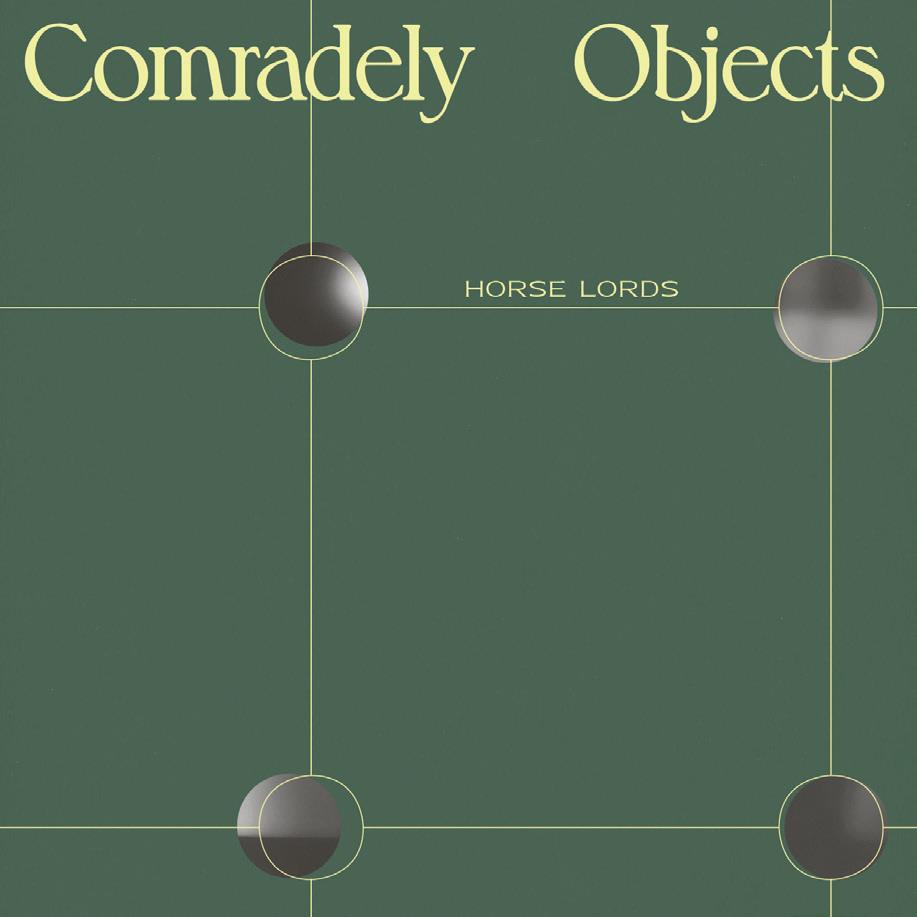
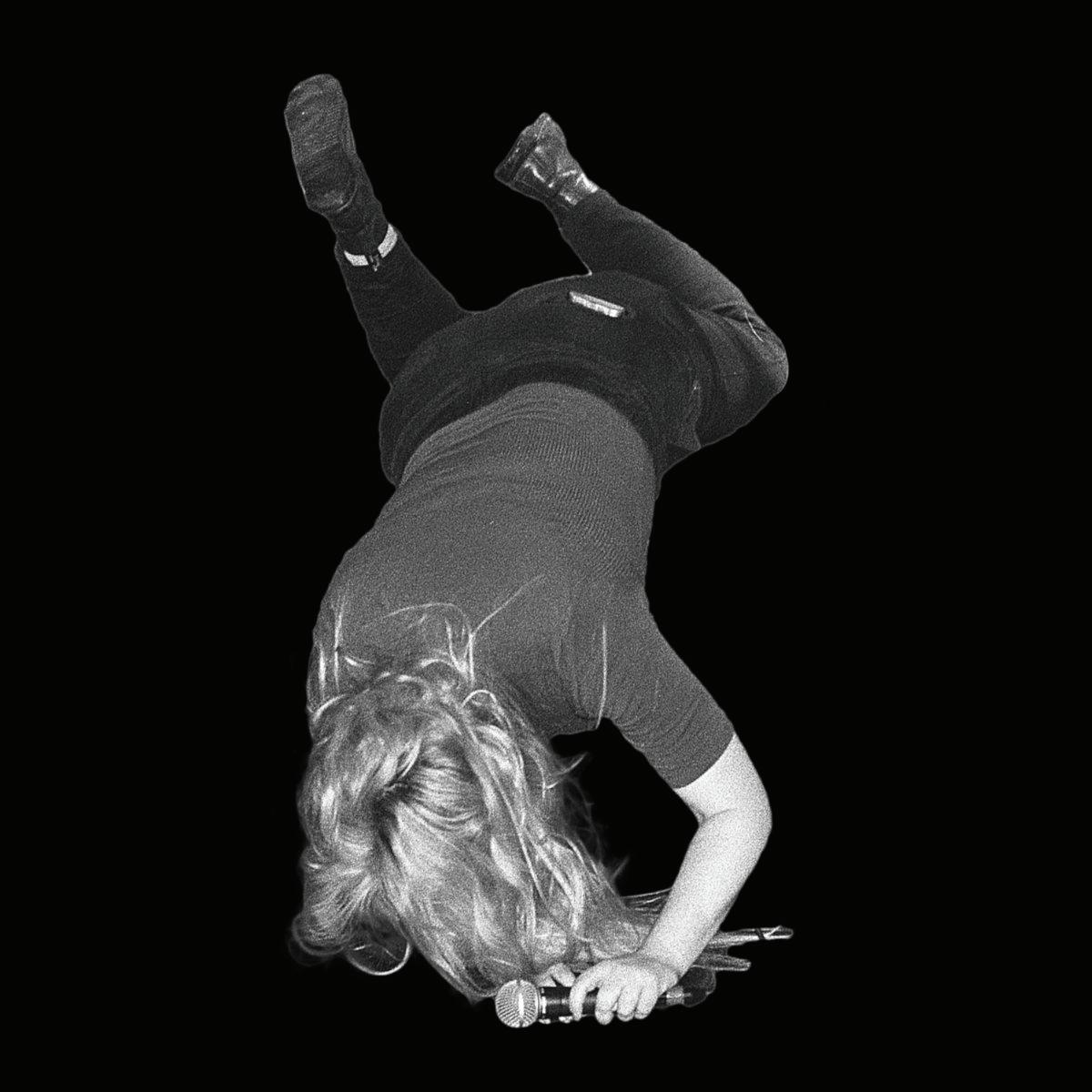

Portrait of the Boob Tube as a Young Cathode Ray
Review of TV Snapshots: An Archive of Everyday Life, by Lynn Spigel Review by Michael Quinn
For a long stretch of years, I lived without a TV. What do you do at night?, people would ask me, more concerned than curious, as if there was only one thing you could do and one thing you needed to do it. As it turns out, there’s something else people like to do with a TV besides watch it. They like to take pictures of it. TV Snapshots: An Archive of Everyday Life, by Lynn Spigel, thoroughly and engagingly analyzes a collection of amateur snapshots, from the 1950s through the 1970s, of people posing next to their TVs, to understand why. Spigel, a professor of screen cultures at Northwestern University, has spent a decade collecting almost 5,000 photos of all kinds of people and their beloved TVs. “I have lost many bidding wars on eBay!” she laments. As an academic, Spigel is interested in the “invisible histories” pictures like these suggest: Who were these people, and what compelled the photographer to pose them by a TV? The size of Spigel’s collection makes it clear that this tradition was widespread—but how did it become so, not just for a family, but for a culture? Clearly, the emergence and relative affordability of the snapshot camera played a huge role. Spigel unpacks the relationship of these “companion technologies”—TV and camera— to examine the impact of the “everydayness” of media on people’s behavior. After all, media is the source of a lot of our ideas on how to think, act, and behave. (It makes me think of how taking a selfie was once a new thing, but once those images starting cropping up online, a kind of conformity crept in. Eventually everyone started making the same kind of sexy pout—the infamous duck lips.) Even now, entrenched as we are in our digital age, TVs are still a big part of American lives. They still take pride of place in most homes: just think of how most living rooms are set up to accommodate what’s best for them. While the size of your TV might be the most impressive thing about it now, in the beginning, just having a TV was a real status symbol. Some of the shots Spigel shares are portraits of early models: tiny, curved screens housed in huge wooden cabinets. Over time, these behemoths became like any other flat surface in the house: a place to pile all of our crap. “Bric-a-brac tells a family story,” Spigel points out. In some photos, a TV is used as a pedestal to display something meaningful, such as a framed picture or a vase full of flowers. In others, what’s significant is the mess all around the TV: a tangle of cords behind it, a jumble of toys on the floor in front of it. Spigel’s vast collection includes trick shots (such as a person standing next to a picture of themselves on the TV’s screen), glamour shots (both ladies and drag queens), and even sexy poses (a nude man lies stretched out on a couch, arms behind his head, with a copy of TV Guide over his, uh, remote control). Fascinating as it is, TV Snapshots isn’t an easy-breezy read—nor is it meant to be. Spigel is writing for other academics (debating things like what constitutes an archive versus a collection), but any reader can find value in her thought-provoking ideas about media’s influence on racism and gender roles, and especially in the photos, a kind of cultural currency that trades in kitsch, camp, and a sentimental longing for the pre-digital age. Spigel writes, “Television sets and snapshots of them are now part of a widespread analog nostalgia for nonconnected media things—things that came inside walnut cabinets, record sleeves, film cans—timeworn objects with noisy scratches, missing inserts, faded colors, flashed flashbulbs, and bent antennas searching for signals no longer in the air.” The most surprising thing TV Snapshots gave me was insight into my own ambivalent relationship with television. I grew up in a house where the TV was always on. My father, who had two working parents in the 1950s, felt he’d been raised by it and found it comforting; I found myself competing with it to be seen and heard. By the time I left home, I’d had enough of the both of them. At a certain point, friends, pitying my TV-free existence, gifted me with one. It sat untouched on a dresser. I never once turned it on. That might put me in the minority—but it puts me in some excellent company. In her memoir, Just Kids, singer Patti Smith recounts her experience moving into the Chelsea Hotel in 1969 with photographer Robert Mapplethorpe: “There was a sink and mirror, a small chest of drawers, and a portable black-and-white TV sitting on the center of a large faded doily. Robert and I had never owned a TV and it sat there, a futuristic yet obsolete talisman, with the plug dangling for our entire stay.” I’m sure there’s a picture of this somewhere, and I’ve no doubt Spigel will be the one to find it. Flip through TV Snapshots and you’ll get sucked right in.
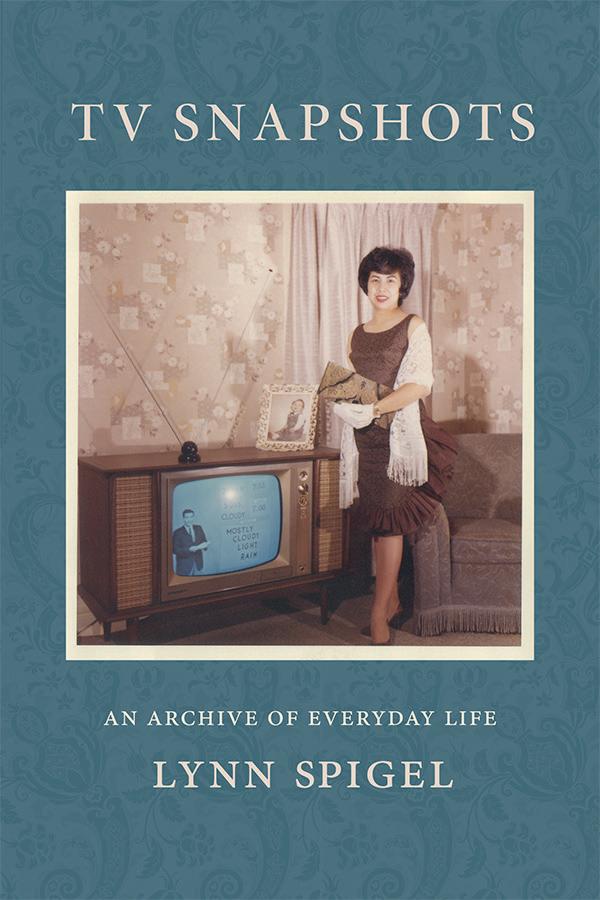
Jazz by Grella
Safety And Freedom
by George Grella

Of course conservatives hate the movies and the entertainment industry that produces them: movies are, bottom line, substantial investments of capital that seek to return profits. Thy are made to sell to viewers, and so movie makers try and give the public what the producers think it wants. Thats why there’s a massive library of MCU and Star Wars movies and shows, expensive, professional, and predictable stories without meaning or drama that people eat up. We all want some sort of safety, and these movies are safe as can be. And they are also made to appeal to the largest number of people, and the producers have figured out that it helps to have all sorts of people up there on the screen. The term from the discourse is representation, but it’s really, simply just life. Life in a big city where a movie company is located means being surrounded by all sorts of people, that is the basic fabric of life. And since there’s a large minority in America that is absolutely furious that there are people who look and think differently than they do, there is constant loud whining about this (these aren’t controversies because there’s no sides to it). Movies, often made by smart people, have also the prime mechanism for smuggling truly left-wing, or at least leftist friendly, ideas into the minds of mass audiences. The whole capitalism—as—organized—crime thing started with and has thrived through the movies, pictures like On The Waterfront, Force of Evil, Point Blank, The Conversation, Robocop, and Michael Clayton. And don’t even get me started on the confusion over the fantastic antifascism of Starship Troopers. This month, the Criterion Channel might be smuggling a great, avant-garde message into living rooms all over America, via their new collection, “Free Jazz,” 12 films that either document the music or use it as a key dramatic element. What theses movies will show is that the things that musicians like Ornette Coleman and Sun Ra left here for us to learn may be complex, even hard to enjoy on the surface—free jazz as a means of form and structure depends on musicians, on the spot and in the moment, inventing things, whether it’s a fitting together notes and rhythms into an abstract structure (the way a sonata works), or expressing personal ideas and emotions. That’s not a song, but it comes from a similar place of sharing an idea about something through music. But in free jazz, it’s something more heroic, an existential carving of meaning from the face of the universe. Yes, complex, and in terms of style often an immediate challenge to the ears. Even listeners addicted to the quantized beats of so many contemporary popular styles have little issue with the flexible rhythms of funk playing, but what about when there’s no clear rhythm, or pulse, or even a downbeat? What if instead of homophony (melody with harmony underneath) there is multiple instruments going their own ways, all at once? That’s true personal freedom, not the popular kind where you don’t pay taxes and can park your car for free wherever you like, but the personal kind, freedom of thought and conscience. That type of freedom is appealing to many people, and free jazz is often unexpectedly compelling to people who never listen to mainstream jazz to begin with. There’s certainly an overlap in sheer sonic quality to punk and noise music—free jazz predates them both—and underneath it all is the anarchy. That’s not anarchy in the sense that anything goes (not all free jazz is good and one of the most frequent reasons it fails is because the musicians don’t reign in every impulse or shape the results) but in the sense of a society without rulers, but with leaders, and devoted to a musical mutual aid. To play free in a group means listening to what everyone has to say. Living in cities makes a difference, I believe, and all the mutual aid groups in New York are philosophical cousins to free jazz. I’m sure there’s no data behind this, but I’m also sure that free jazz doesn’t have much appeal to resentful whites who vote Republican— free jazz is inherently antifascist—while it thrives in pockets in urban areas, large and small. Streaming on Criterion means those pockets will reach into every home where one of the movies is playing. In terms of who is drawn to the music, there’s a brief and fascinating scene in the documentary Sun Ra: A Joyful Noise where Ra and the Arkestra are playing in a bar in Philadelphia, within arm’s reach of the patrons who are dressed up for a night out. The incongruity between the social scenes of the band and the bar disintegrates when you see how hard the audience is listening. Ra was one of the absolute greats, showing the world how logical it is to mix Fletcher Henderson charts, songs from Disney films, doo-wop, and free improvisation. His whole social and political conception was about freedom from the racism of society, and those are on display in his science fiction movie, Space Is the Place. It’s an incredible movie, not necessarily, or always, good, but incredible. It mixes together blaxsploitation, Bergman’s The Seventh Seal, concert film, action, and more; there are professional actors and obvious amateurs; it is serious about its ideas but good humored, and is unlike anything you’ve ever seen. It’s a visual narrative drama of Ra’s music making. The lineup also includes exceptional documentaries likes Ornette: Made in America, Milford Graves Full Mantis, and the recent Fire Music. One of the real finds is another fiction movie, Les stances à Sophie, a 1971 French film that has a score by the Art Ensemble of Chicago. For that movie, that band cut the track “Thème De Yoyo,” with the great Fontella Bass singing, the AEC laying down the funk with the best of them and also blowing away the bar lines with explosive freedom. What will this all mean to home viewers encountering this music for the first time? One thing is the cementing of the sophistication of these artists, their skills and thinking, even as the way they choose to be in society may be far from what the average person desires—there’s Sun Ra’s communal house, and there’s also the Art Ensemble, which had to stay at campgrounds and pitch tents during their first tour of Europe because they didn’t have the money for hotel rooms (not in the movie—many of the members of the AEC had been in the military, and trumpeter Lester Bowie recommended army training to aspiring free jazz musicians so that they would have the survival skills). I expect that the great humanity of this music will come through, that it’s all about experiences of life, about thinking that the most beautiful thing is to express yourself sincerely and honestly, and to be thoughtful about what you want to say, and say the thing that will mean the most to the largest number of people. That’s not the predictability of a rhyme, or a song about yet another heartache and heartbreak. It’s about saying, “we’re all in this together,” and trusting that, even in the American of 2022, there’s still a good number of people who think that, rather than just ones who resentfully hate anyone different than them. There’s safety in those numbers. There’s safety, too, in freedom.

Marie's Craft Corner
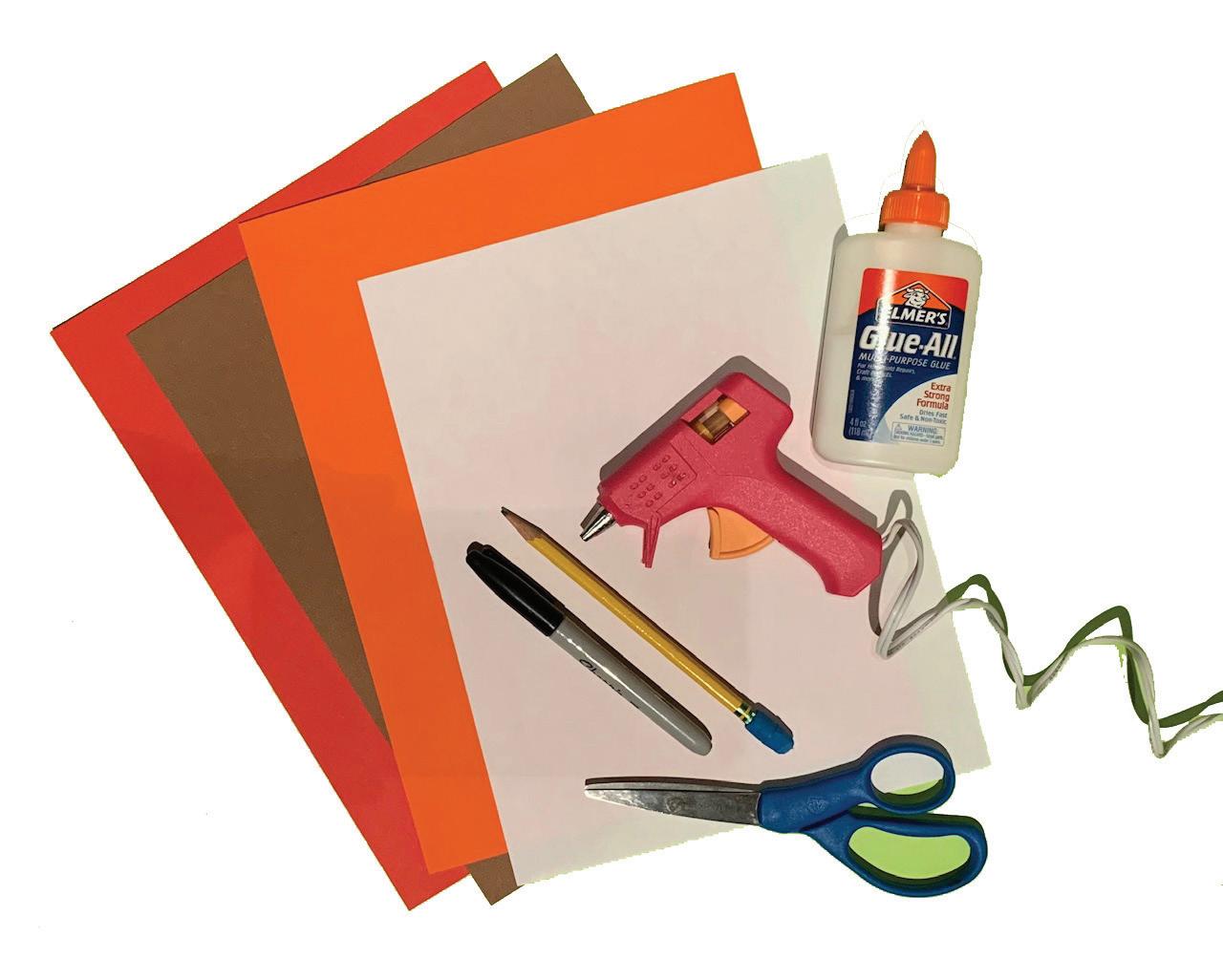
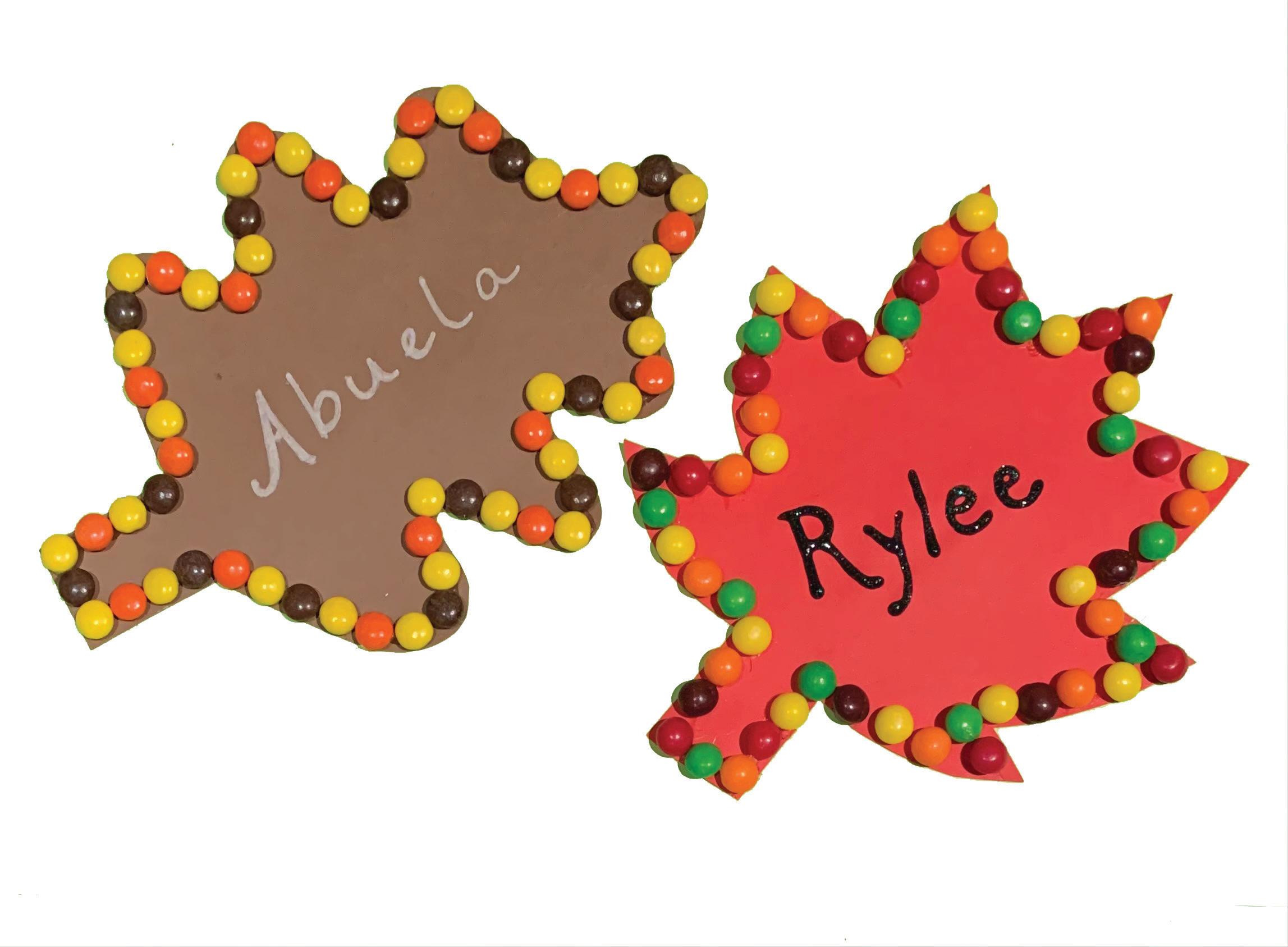
Turn Left-Over Halloween Candy Into Thanksgiving Place Cards!
by Marie Hueston
This year it seemed there were more Halloween parties and Fall Festivals in Red
Hook than ever before, and if you add Trick or Treating, you were probably able to accumulate lots of candy. Find a new use for some of
your extra candy by using it to create playful, colorful place cards for your Thanksgiving table. Here’s how:
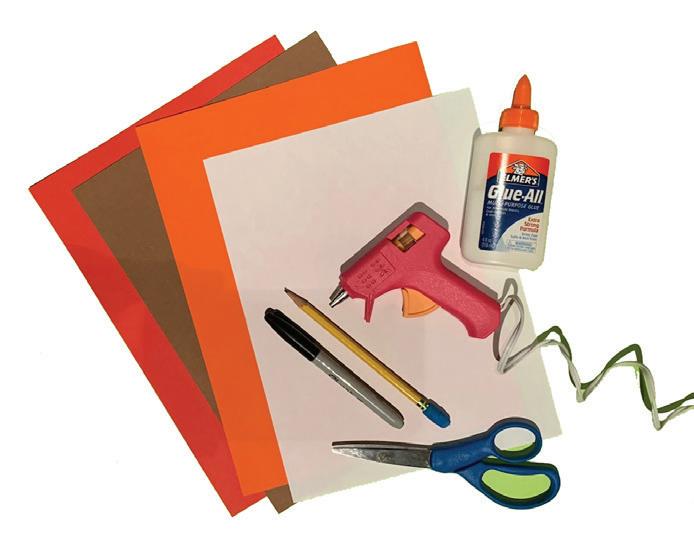
Gather Your Materials. Small, round candy works best, such as Reese’s Pieces, Skittles or M&Ms. In addition to the candy you’ll need plain white copy paper, construction paper in fall colors, a pair of scissors, pencil, Sharpie and glue. You can use either hot glue or school glue.
Create a template of a leaf on white
paper. Search online for leaf outlines or you can even trace a leaf you find outside. Sketch the outline in pencil and draw over the line with Sharpie once you’re happy with the shape. Cut along the line to create your template.
Use your template to create mul-
tiple place cards. Lay the template on top of your construction paper and cut around it to create a single place card. Depending on your table setting, you may choose to make all your place cards the same color, or you might want to represent all the fall colors. You can reuse the white paper template to make as many place cards as you need.
Glue candy around the edges of your
leaves. On a flat surface, gather your leaves, candy and glue. Apply a small dot or short line of glue and place candy on a few pieces at a time. Continue around until all edges are lined. It’s up to you whether you want to create a repeating pattern with the colors or randomly place them. If using a hot glue gun, supervise young children. If working with school glue, it will take longer to dry completely.
Write your guests names on the
place cards. You can use markers, paint pens, or glitter glue to spell out the names of your Thanksgiving guests. Your handwriting doesn’t have to be perfect—the personal touch will make your table memorable. Be sure to tell any children at the table that once the candy is glued in place it should not be removed and eaten. You might want to keep a stash of candy on hand that’s safe to eat in case anyone is tempted.
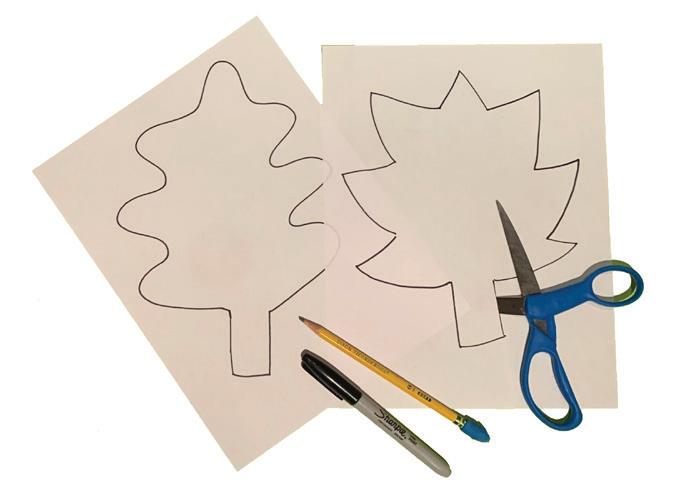


SHARE YOUR
DESIGNS WITH US!
Email pictures of your creations
to our editor at
gbrook@pipeline.com
December Preview: Put aside
three to four small delivery
boxes, preferably all the same
size, for a holiday dollhouse
project.



